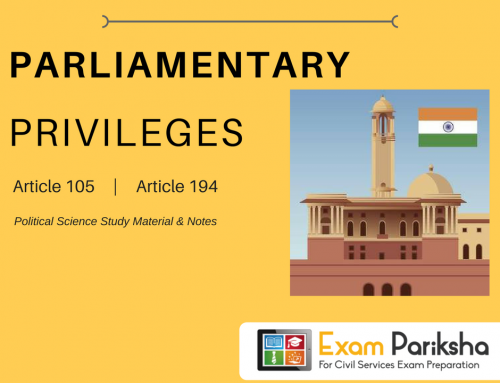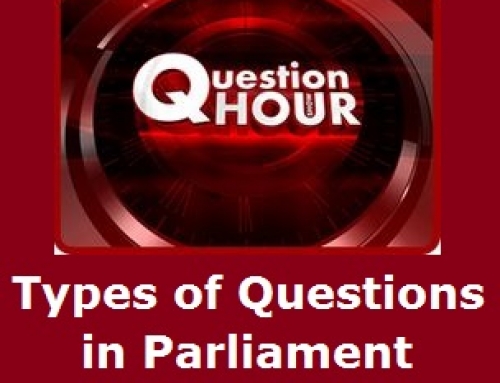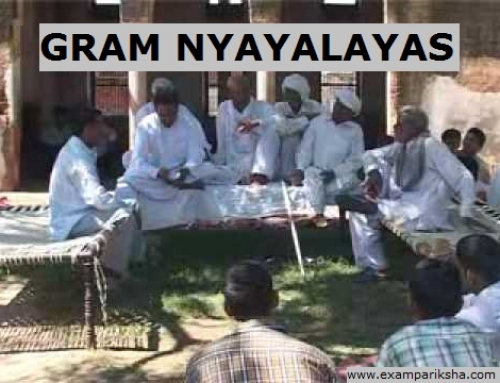
PM of India: Narendra Modi
It is mentioned in the Constitution that – the executive powers of the President are to be exercised by the Council of Ministers. “There shall be a Council of ministers with the Prime Minister at the head to aid and advise the President in the exercise of his functions”. Here the word “shall” means that the President cannot function without the Council of Ministers. This implies that, the President is the constitutional head of State, but the real head of the government is the PM.
The Prime Minister has a special status both in the Government and in the Parliament. This makes him/her the most powerful functionary. His/her position and powers depend upon his/her personality.
Appointment of the Prime Minister
The Prime Minister is appointed by the President, but he does not have his discretion in that appointment.
- Normally the President has to invite leader of the majority party in the Lok Sabha to form the government.
- In case no single party gets a clear majority, the President invites the individual commanding the support of two or more parties which make up majority in the Lok Sabha.
- The Prime Minister is usually a leader of the majority party in Lok Sabha. However, there have been cases in past where a member of Rajya Sabha was appointed as the Prime Minister. For example, Mrs. Indira Gandhi was first appointed as Prime Minster in 1966, and Mr. I. K. Gujral in 1997 or when Rajya Sabha member Dr. Manmohan Singh became the Prime Minister in 2004. In 1996 H.D. Deve Gowda was not a member of any House yet he was appointed PM, he later entered the Rajya Sabha.
- The Prime Minister decides portfolios of the Ministers, and can alter these at his will. The Prime Minister presides over the meetings of the Cabinet. The Prime Minister has the authority to reshuffle the portfolios of the Ministers or even ask for their resignation.
- In case of resignation or death of the Prime Minister the entire Council of Ministers also goes out of office. This is because the Council of Ministers is created by the Prime Minister, who also heads it. The entire Council of Ministers is responsible to the Lok Sabha.
Term of the Prime Minister
Once appointed, the Prime Minister holds office so long as he/she enjoys the support of the majority of members of Lok Sabha. He cannot be removed by the President. If he loses the majority support in the Lok Sabha, he should resign or the President must dismiss him.
Powers and Functions of the Prime Minister
- The Prime Minister is the most important and powerful functionary of the Union Government.
- The Prime Minister is the head of the Council of Ministers.
- He selects the Ministers to be sworn in by the President. The Ministers are chosen by the Prime Minister and they remain Ministers as long as they enjoy the confidence of the Prime Minister.
- The Prime Minister distributes portfolios among Ministers. He can change the portfolios whenever he desires.
- The Prime Minister can drop a Minister or ask for his/her resignation also.
- The Prime Minister presides over the meetings of the Cabinet and also conducts its proceedings.
- He is the head of the Cabinet, he/she mainly influences the decisions of the Cabinet.
- The Prime Minister also co-ordinates the working of various ministers.
- Prime Minister serves as the link between the President and the Cabinet.
- The decisions of the Cabinet are conveyed to the President by the Prime Minister. He keeps the President informed of all the policies and decisions of the Government.
- In fact, no Minister can meet the President without the permission of the Prime Minister.
- All important appointments are made by the President on the advice of the Prime Minister.
- The President summons and prorogues the session of the Parliament and even dissolves the Lok Sabha on the advice of the Prime Minister.
- The Prime Minister is the “principal spokesman” and defender of the policies of the Government in the Parliament. When any Minister is unable to defend his/her actions properly, the Prime Minister comes to the help of that Minister both inside and outside the Parliament.
- The Prime Minister is the leader of the nation. The nation looks to his/her for guidance.
- In fact, at the time of general elections, it is the Prime Minister who seeks the mandate of people.
- The Prime Minister plays an important role in the formulation of domestic and foreign policies. All international agreements and treaties with other countries are done with the consent of the Prime Minister.
Emoluments of the Prime Minister
- The salary and allowances of the Prime Minister are determined by the Parliament. He receives salary and allowances that are payable to a Member of Parliament.
- He receives sumptuary allowance, free accommodation travel allowance, medical facilities in addition to his salary.
Hence it can be concluded that, the Prime Minister is not only a leader of the Parliament but also the leader of the nation. The Prime Minister has to secure the willing cooperation and coordination of all important members of the Parliament as well as State Legislature. But in a minority government, the Prime Minister has to depend on outside support that might act as hindrance in his effective functioning. This happened in last decade of UPA administration government, where political compulsions stalled the reforms and effectively slowed down the growth of the economy.





